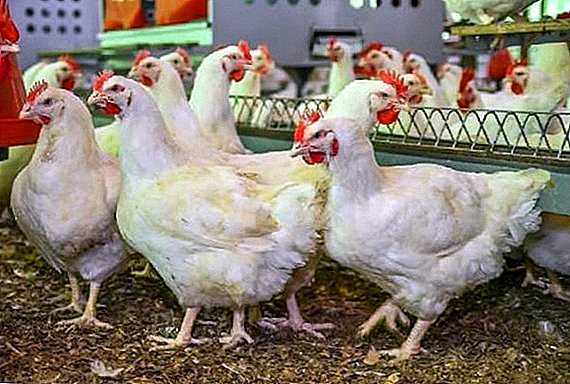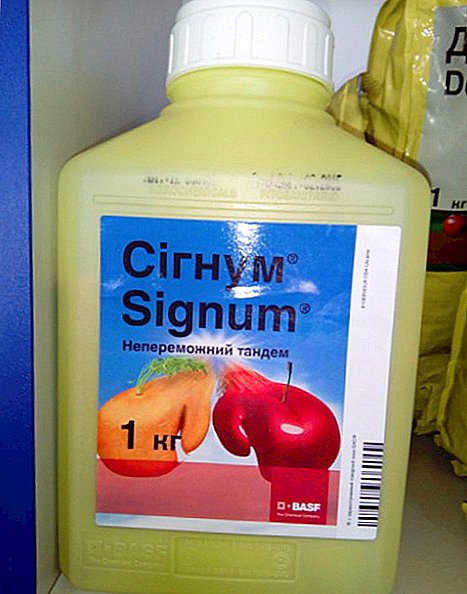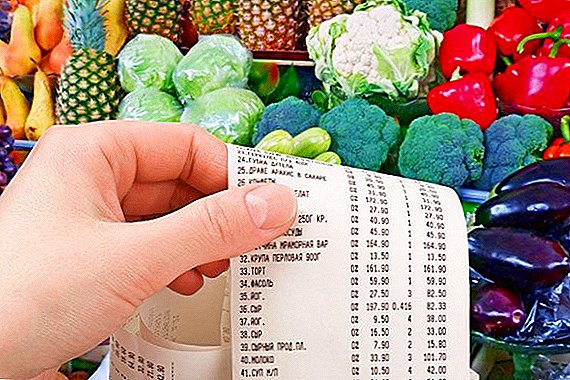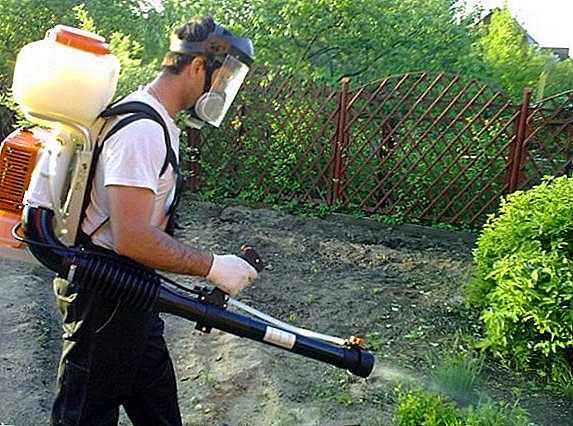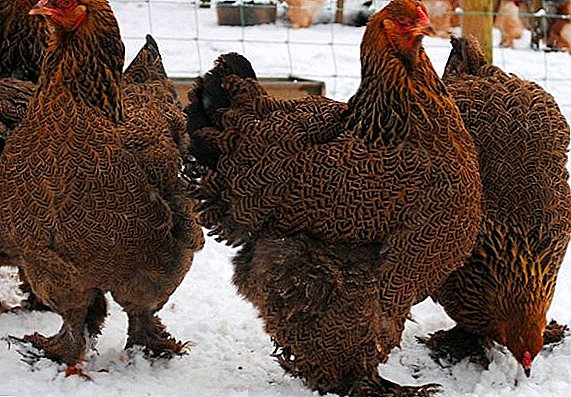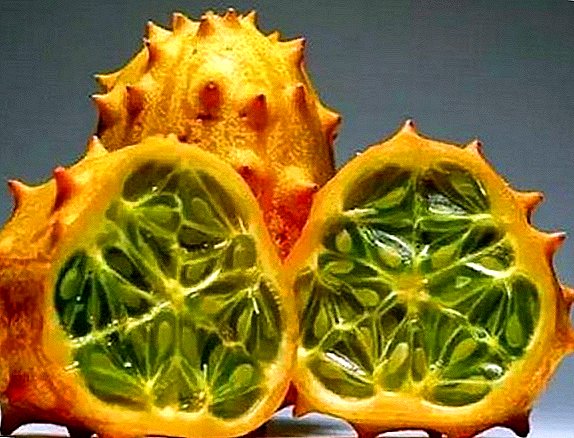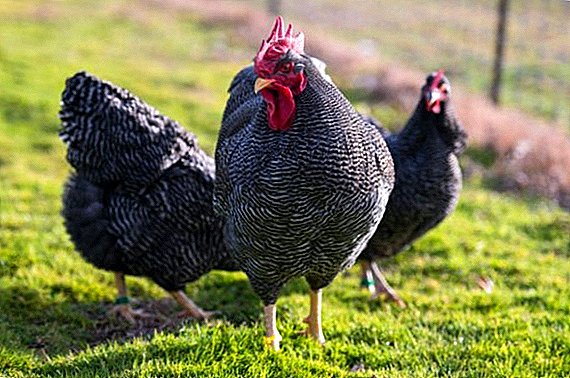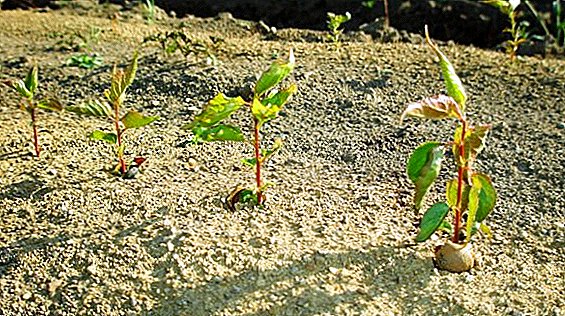 Word "stratification" sometimes it scares only with its sound, it sounds very scientifically. However, every experienced and serious summer resident, gardener or florist sooner or later faces this process in practice. Let's see what is stratification of seeds and how to properly conduct it.
Word "stratification" sometimes it scares only with its sound, it sounds very scientifically. However, every experienced and serious summer resident, gardener or florist sooner or later faces this process in practice. Let's see what is stratification of seeds and how to properly conduct it.
Did you know? The term stratification comes from the two Latin words stratum - flooring and facere - to do. For the first time it was used in 1664 in the book of Silva "Talk about forest trees and their reproduction for logging".
Stratification - what is it, or what is stratification for?
 Everyone knows that everything in nature is conceived wisely and nothing happens without reason and need. This also applies to the development of plants. Thus, in many crops, ripened seeds fall into the ground when they still have the ability to germinate.
Everyone knows that everything in nature is conceived wisely and nothing happens without reason and need. This also applies to the development of plants. Thus, in many crops, ripened seeds fall into the ground when they still have the ability to germinate.
If sprouts appeared from them immediately, they would not have survived in the conditions of winter. And so that the seeds do not kill the frosts, they are covered with a thick shell that protects them from the cold, and from the snow, and from excessive moisture.
But, besides the shell, there is also genetic defense - the seeds are arranged so that they do not germinate until they lie for some time at a low temperature, about 0 degrees, in a humid environment and with access to air. It is these conditions that are necessary for the physiological processes of preparing seeds for germination.
While in a state of rest, they contain special chemicals that prevent them from sprouting - growth inhibitors. With the arrival of spring and the onset of heat, the seed coat becomes softer, their biological rest period ends. Growth inhibitors are gradually destroyed, and they are replaced by developed growth promoters. The germ begins to grow, and the seeds germinate in the ground.
Now you have an idea about the mechanism of natural stratification of seeds, about what it is and why it happens. Next, we will talk about how to carry out this procedure artificially, at home.
 After all, if a person needs to achieve in order to propagate a plant by the seed method, he needs to create conditions for seed germination, like natural ones, which occur in winter and spring.
After all, if a person needs to achieve in order to propagate a plant by the seed method, he needs to create conditions for seed germination, like natural ones, which occur in winter and spring.
If a clear definition of stratification is given, this is the name of the natural process of the transition of seeds from a state of rest to a state of growth and development under the influence of external environmental influences. In the artificial implementation - This is a pre-sowing preparation of seeds in order to accelerate their germination and germination by a predetermined period. In fact, it is an imitation of certain natural conditions in order to remove seeds from the state of rest and prepare them for the period of development.
To explain how to stratify seeds, and what it generally is for ordinary dacha or room conditions, it is necessary to clarify: for the seed germination process, three important factors are necessary - favorable temperature conditions, moist environment and access of oxygen.
When seeds are placed in such conditions, after a certain time, their hard coating softens, cracks and mucus, and complex chemical processes take place in the seed itself, which lead to the growth of the embryo and their search for access to light and food.
 Therefore, it is often recommended in the recommendations for growing and reproduction of many plants using the seed method to sow the seeds before sowing, asserting that this will allow the sprouts to ascend together precisely at such a time as is needed for planting in the soil.
Therefore, it is often recommended in the recommendations for growing and reproduction of many plants using the seed method to sow the seeds before sowing, asserting that this will allow the sprouts to ascend together precisely at such a time as is needed for planting in the soil.
Types of stratification
According to the methods of stratification, there are four types:
- cold
- warm
- combined;
- stepped.
There are also three types of stratification in terms of its implementation:
- autumn;
- winter;
- spring.
 Precisely before the New Year, stratification of seeds is carried out, which need to spend one week in warmth and six weeks in the cold for germination. These include ornamental and indoor plants - for example, iris, lavender, violets, clematis, etc.
Precisely before the New Year, stratification of seeds is carried out, which need to spend one week in warmth and six weeks in the cold for germination. These include ornamental and indoor plants - for example, iris, lavender, violets, clematis, etc.
In early spring, they sow seeds that need only a short period of cooling - one day in the heat, one or two weeks in the cold. This procedure is applicable to perennials - delphinium, primrose, aquilegia, etc.
What seeds need stratification
Basically, the stratification is used for seeds that are difficult to germinate, for example, fruit, forest, ornamental crops.
Important! Not all plant crops need the stratification method. For example, it does not need plants that grow in natural conditions in warm climates, in regions where there are no cold winters. Cultures with a short rest period (tomato, eggplant, pepper, pumpkin, etc.) do not need it either.One can stratify the seeds of which particular plants before planting can be found in the specialized literature, plant reference books, as well as in the information on the packaging label to the seed material.
How much time to stratify the seed will depend on the type of plant. Each of them has a different duration of periods of rest and vegetation. Thus, the stratification periods for each will be special. So, the seed material alone will need to lie in the cold and moisture for three to four months, some will be enough for 10-15 days. 
Did you know? As a rule, the period of stratification in most plants lasts from one to six months. Perennials can survive it up to two years.
How to prepare seeds for stratification
Before proceeding directly to the stratification of seeds, it is desirable to disinfect them by soaking them for half an hour in a solution of potassium permanganate (0.5%). Next, they must be washed, cleaned and soaked. They are washed in the usual way in water at room temperature. Clear from soft tissue, do not touch the hard shell.
Then soaked for 6-12 hours in cold water. This will allow the seeds to absorb enough moisture to invigorate the internal chemical processes and accelerate the stratification process itself. Some seeds require soaking in warm water (15-20 ° C) before swelling. After soaking the seeds are dried.
Important! Only dry seeds are suitable for stratification. Otherwise, under the influence of moisture, they may begin the process of rotting..
It is also necessary to prepare a substrate for stratification. Suitable for storing seeds sand, peat, sphagnum moss, vermiculite; a mixture of peat and sand (1: 1). By the number of it should be three times more than the seeds themselves.  An important condition will be disinfection of the substrate - It must be subjected to high temperatures to kill pests and fungal diseases. Make it possible by placing the soil in the oven for one hour at a temperature of 100-120 ° C or for 10 minutes at maximum power in a microwave. Purchased soil heat treatment is not necessary.
An important condition will be disinfection of the substrate - It must be subjected to high temperatures to kill pests and fungal diseases. Make it possible by placing the soil in the oven for one hour at a temperature of 100-120 ° C or for 10 minutes at maximum power in a microwave. Purchased soil heat treatment is not necessary.
Swollen seeds are placed in the substrate. They can just fall asleep in the soil and mix. Or, if they are large in size, evenly distribute them on one layer of soil, and cover them with another layer. There may be several such layers.
The substrate is moistened to the state until the water starts to come out of it. Then it is necessary to wait a little so that the soil dries out, was wet, but not wet. Now we can proceed directly to the stratification process.
Planting Stratification Process
 There are several ways to lay seeds for stratification. The easiest of them - artificial stratification of seeds is carried out in a refrigerator, basement or other cold room. When using the refrigerator, you can place the substrate with seeds in pots, pots covered with foil, or simply in plastic bags - to save space.
There are several ways to lay seeds for stratification. The easiest of them - artificial stratification of seeds is carried out in a refrigerator, basement or other cold room. When using the refrigerator, you can place the substrate with seeds in pots, pots covered with foil, or simply in plastic bags - to save space.
Tanks are stored on the bottom shelf. At the same time, it is necessary to sign the name of the plant and the date of placement for stratification. Also in the film, be sure to make holes for the access of air.
It is possible to place the seeds in plastic bags, and then in a container and bury for the winter period, before the snow melts, into the ground. When the onset of heat they are moved to the refrigerator.
The condition of the substrate and seeds must be checked every 10-15 days. It is important to prevent the substrate from drying out. It is recommended to moisten it periodically with melt water. Defective seeds must be promptly removed.
Cold stratification
The optimum temperature for cold stratification is + 4 ... +5 ° С. Humidity should be at the level of 65-75%. 
This method is used for perennial plants that grow under natural conditions during the warm and cold time, and their growing season ends in the fall. These are stone fruit, pome seeds, some vegetable, flower and other crops.
Warm stratification
With a warm stratification, the seeds for a short period are exposed to a temperature of + 18 ... +22 ° C and a humidity of 70%.
Typically, this method is used for vegetable crops. For example, seeds of tomatoes, cucumbers, eggplants, and pepper can be soaked for one or two days in warm water and placed in a warm room.
Some seeds will require a combined stratification, which is carried out in two stages with the influence of variable temperatures. For its implementation, the seeds are first placed for a certain time (from 1 to 7 months) in a warm room with a temperature of + 20 ... +25 ° C. And then, after they swell, they are placed in a cold place (0-5 ° C).
 This species is used for plants, a prerequisite for germination of which is the change of the seasons. These include, for example, yew, hawthorn, viburnum, apricot, plum, etc.
This species is used for plants, a prerequisite for germination of which is the change of the seasons. These include, for example, yew, hawthorn, viburnum, apricot, plum, etc.
In the case of stepwise stratification, several cycles are performed with a change of low and high temperatures. After stratification, the seeds are ready for planting in a pre-fertilized open ground or in a pot.
Is it possible not to stratify the seeds and how it threatens the harvest
The simplest answer to this question will be the well-known expression: "You will not go against nature." If the seeds do not undergo special training, then they will have too many growth inhibitors, which will not give them the opportunity to germinate. In this case, the process of their germination can be delayed for a longer period - they can ascend only after one or two years, and then provided that they do not die during this time.
However, all of this applies primarily to those plants that are accustomed to grow in climatic conditions with a change in temperature and humidity regimes. Those cultures where these conditions are stable do not require additional efforts to germinate seeds, they can multiply throughout the year.
If you are interested in the question, what kind of flowers need to be stratified on a mandatory basis, then definitely it is all perennials. The bell strands and buttercups (anemone, clematis, peony), barberry, honeysuckle, primrose, magonia, lilac, host, cornflower, cloves, dolphinarium, etc., require cold stratification. 
Important! Before proceeding to the propagation of plants and stratification of seeds, it is necessary to study information about the timing and duration of this process for this particular culture.Thus, the implementation of seed stratification at home is not difficult. Knowing its basic rules and recommended indicators, this process can be carried out even by a novice florist or summer resident.


